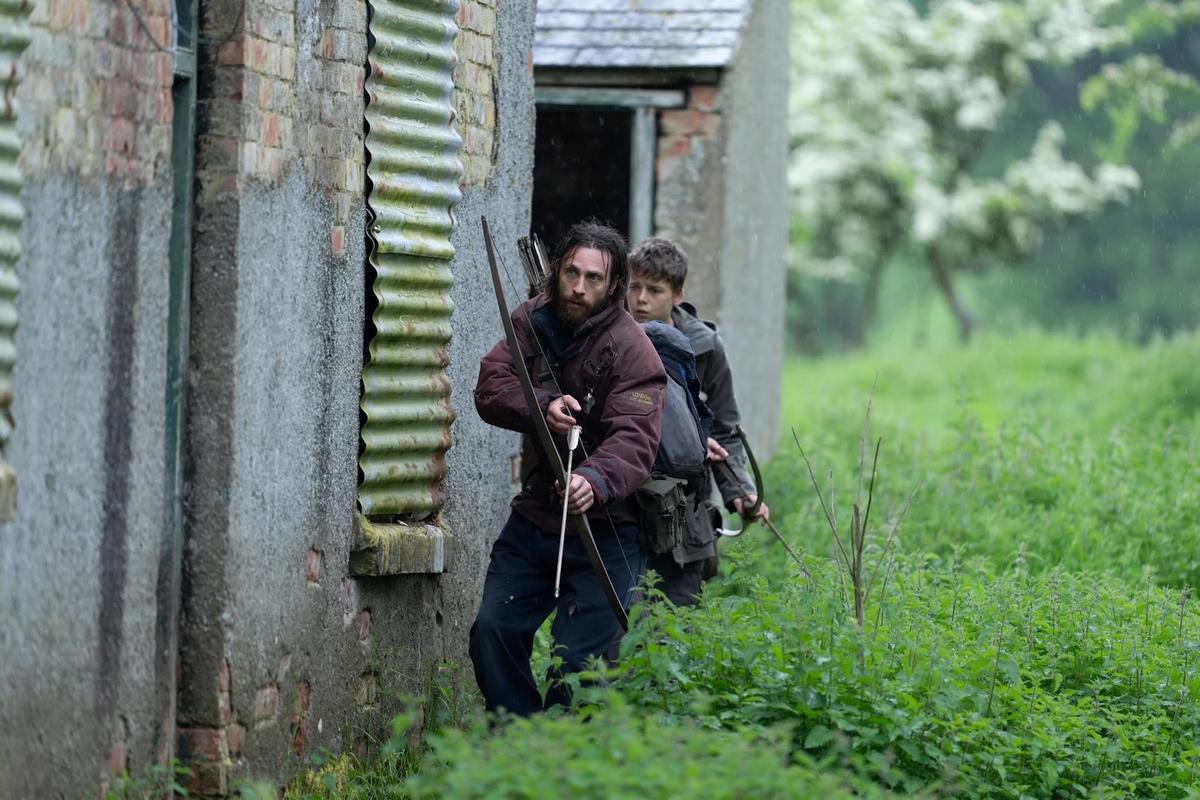'28 Years Later' review: Zombie sequel stumbles
After a zombie pandemic, a boy leaves his safe haven to seek help for his ailing mother.
Alfie Williams, Jodie Comer, Ralph Fiennes
R (extreme gore and violence)
1:55
Area theaters
A stumbling sequel to a famously fast-paced horror film.
It was the simplest of ideas: Hey, what if zombies were fast? Thus "28 Days Later," released in 2002, brought a new twist to an old genre. Thanks to Danny Boyle’s panicky direction, Anthony Dod Mantle’s gnarly cinematography and Alex Garland’s into-the-abyss screenplay, the movie became a game-changer. Zippy zombies began popping up everywhere, in a "Dawn of the Dead" remake, the gory comedy "Zombieland" and Brad Pitt’s "World War Z" to name just a few. ("How did zombie movies get so fast?" Slate wondered in a 2004 essay.)
A stand-alone sequel, "28 Weeks Later," written and directed by others, came and went in 2007. Then Boyle and Mantle won Oscars for 2009’s "Slumdog Millionaire" and Garland’s critical hit "Ex Machina" won the 2015 Oscar for visual effects. Now, with "28 Years Later," the three principals have reunited for what feels like the first proper sequel to their old zombie milestone.
After a prologue reminding us that the pandemic started back when British children still watched "Teletubbies" on the Beeb, we meet 12-year-old Spike (a terrific Alfie Williams) and his tough-love father, Jamie (Aaron Taylor-Johnson). Their safe haven, Holy Island, is connected to the British mainland by a stone causeway crossable at low tide; folks venture out only for supplies or, like Spike, to sink their first arrow into an "infected." On his father-son hunting trip, Spike stumbles across a zombie who’s been beaten, razored and hung from a rafter — still alive.
Who would do such a thing? Some might say it’s the mad Dr. Ian Kelson (Ralph Fiennes). As it happens, Spike has been looking for a doctor ever since his mother, Isla (a tender Jodie Comer), began spiraling into mental confusion. Ill-advisedly, the boy leads his befuddled mother on a mission to find Dr. Kelson, a man last seen happily burning bodies in a homemade incinerator.
There’s some potential in this setup, but the filmmakers, alas, do not deliver. They strive for a shock-and-awe style but wind up with video-gamey splatter. Every arrow in every skull is driven home with a freeze-frame; the camerawork is overly jittery and the editing almost randomized; the whomping score, by the Scottish hip-hop group Young Fathers, sounds like outdated electronica. Aesthetically, "28 Years Later" feels about 28 years too late.
The film stumbles narratively, too. Kelson, a Kurtz-like figure with his bald pate and body slathered in iodine, is the latest Garland character swiped from "Apocalypse Now" (the others are in his "Civil War," from last year). The film drifts steadily away from horror and into something terribly somber, with much dialogue and symbolism devoted to the topic of death, then quickly snaps back to genre. Meanwhile, the introduction of pregnant zombies brings to mind an activity that’s less horrifying than hilarious.
Sprinkled throughout the film are references to a figure called Jimmy. His late-arriving appearance is framed as a Marvel-style kicker, meant to whip up enthusiasm for another installment, but that seems unlikely. "28 Years Later" tries hard to outpace the original film and keep up with the culture at large, but instead it lumbers slowly behind.











